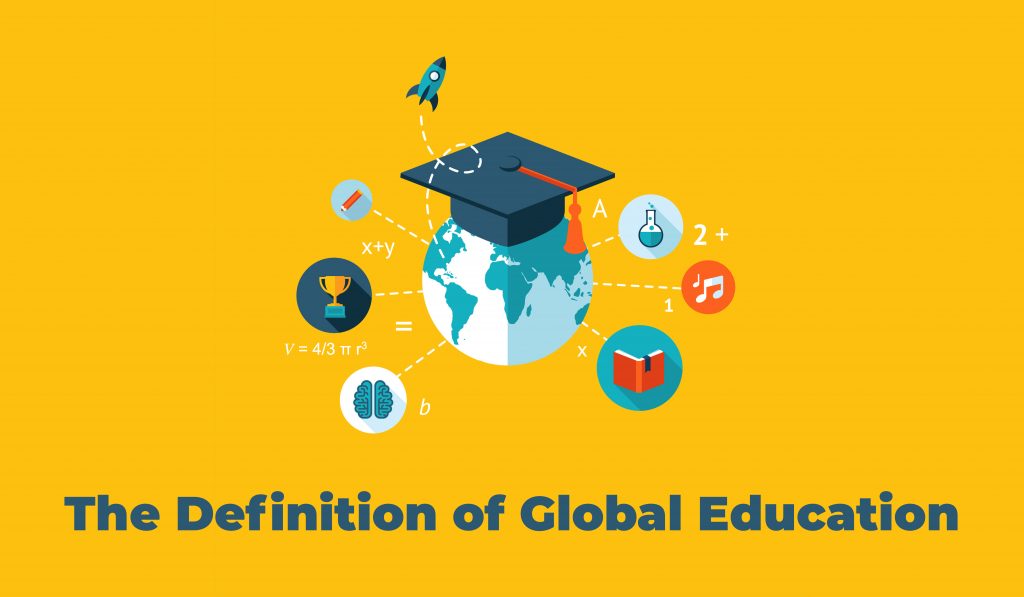In today’s rapidly changing world, global education is more important than ever. As societies become increasingly interconnected through technology, trade, and cultural exchange, education must evolve to prepare students for a world without borders.
Global education goes beyond traditional learning by promoting cross-cultural understanding, global awareness, and critical thinking. It equips students with the knowledge and skills to navigate diverse environments, solve global challenges, and collaborate across cultures.
In this guide, we’ll explore the importance of global education, key components, benefits, challenges, and strategies for implementation in schools and beyond.
Why is Global Education Important?

- Prepares Students for a Globalized Workforce – Businesses operate internationally, requiring cross-cultural competence.
- Encourages Cultural Awareness & Diversity – Fosters empathy, inclusion, and appreciation of different perspectives.
- Develops Critical Thinking & Problem-Solving – Helps students understand complex global issues like climate change, poverty, and migration.
- Promotes Language & Communication Skills – Learning multiple languages enhances international collaboration.
- Encourages Active Citizenship – Inspires students to engage in global issues and take action for social change.
Key Components of Global Education
Global education is multidimensional, integrating various elements into learning experiences:
1. Cultural Competency & Global Awareness
- Understanding different cultures, traditions, and perspectives.
- Recognizing historical and contemporary global events.
- Appreciating diversity and interconnectedness.
2. Language Learning & Cross-Cultural Communication
🗣 Encouraging multilingual education for better global engagement.
📢 Teaching effective communication in diverse settings.
🤝 Promoting respectful dialogue and cultural sensitivity.
3. Technology & Digital Global Learning
💻 Using virtual classrooms and global online collaborations.
📡 Exploring open-access resources and international courses.
🌐 Leveraging social media for cross-cultural exchange.
4. Sustainability & Global Responsibility
🌱 Teaching about climate change, environmental sustainability, and ethical consumption.
🕊 Encouraging human rights education and social justice awareness.
🏡 Fostering local and global community service initiatives.
5. Exchange Programs & International Collaboration
✈ Student exchange programs for immersive global experiences.
🏫 International partnerships between schools and universities.
📚 Shared research projects tackling worldwide challenges.
Benefits of Global Education
1. Enhances Career Opportunities
- Many employers seek globally aware individuals with multicultural experience.
- International business, diplomacy, and development careers require global education.
2. Builds Open-Mindedness & Empathy
- Students develop cultural sensitivity and inclusivity.
- Exposure to diverse perspectives fosters cooperation and respect.
3. Develops Problem-Solving & Leadership Skills
- Tackling global issues encourages critical thinking.
- Students learn to adapt and innovate in diverse situations.
4. Strengthens Global Citizenship
- Encourages awareness of social justice, ethics, and sustainability.
- Promotes active participation in local and global communities.
Challenges in Implementing Global Education
- Access to Technology & Resources – Not all students have equal access to global learning tools.
- Language Barriers – Multilingual learning can be challenging for some students.
- Cultural Sensitivities & Biases – Requires careful, inclusive teaching approaches.
- Curriculum Restrictions – Standardized tests and local curricula may limit global learning initiatives.
✅ Solutions:
- Implement affordable digital tools for virtual global learning.
- Promote language immersion programs and bilingual education.
- Train educators on culturally responsive teaching methods.
- Integrate global topics into existing subjects (history, science, geography).
How to Incorporate Global Education in Schools
1. Integrate Global Issues into Lessons
📖 Teach about international relations, human rights, and sustainability.
🔬 Include global scientific advancements in STEM subjects.
🎨 Explore art, music, and literature from diverse cultures.
2. Encourage Multilingual Learning
🗺 Introduce foreign language programs early.
🎭 Use cultural immersion activities (films, literature, virtual exchanges).
📚 Provide language learning apps and interactive tools.
3. Use Technology for Global Collaboration
💡 Connect students with international peers through video conferencing.
🌍 Use Google Earth, virtual museums, and digital archives for global exploration.
📡 Encourage participation in global online forums and research projects.
4. Promote Global Citizenship Activities
🤝 Organize volunteer projects focused on global issues.
🌱 Encourage eco-friendly initiatives and sustainability projects.
💡 Host cultural exchange events to celebrate diversity.
The Future of Global Education
🚀 AI & Virtual Reality (VR) in Learning – Immersive experiences for global exploration.
🌎 Increased International Partnerships – More schools collaborating worldwide.
📱 More Accessible Digital Learning – Free global courses and open resources.
👩🏫 Global Teacher Training Programs – Preparing educators for cross-cultural teaching.
Final Thoughts: Shaping the Future Through Global Education
In an interconnected world, global education is not just an knowledge option—it’s a necessity. By embracing cultural awareness, technological advancements, and cross-border collaboration, we can prepare students to thrive in an ever-changing global society.
🌍 How do you think global education can be improved? Share your thoughts below! ✈📚✨

